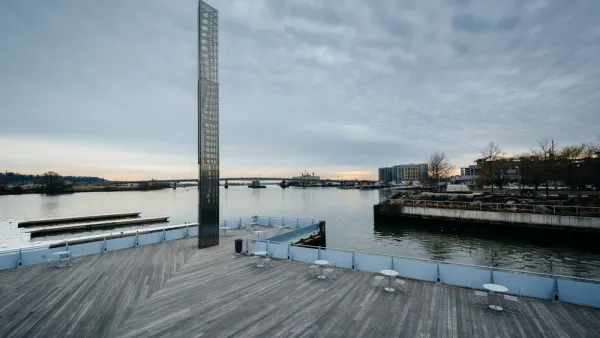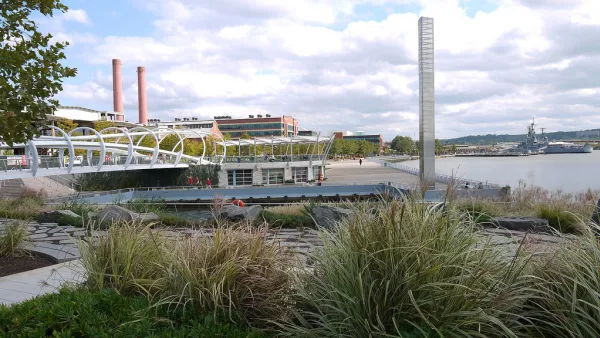A 20-year, $2.6 billion Clean Rivers Project intended to eliminate sewage discharge into D.C. area waterways will benefit the entire region. So, Carol O’Cleireacain asks, why only stick Washington's residents with the bill?
In an opinion piece for The Washington Post, O'Cleireacain, a nonresident senior fellow at the Brookings Institution's Metropolitan Policy Program, argues that because the entire region will benefit from the ambitious project being led by D.C. Water to clean up area waterways, they should be an integral part of planning, implementing and funding the cleanup strategy.
"Cleaner water flowing from the Anacostia and Potomac rivers in the District means that downstream jurisdictions have less of a pollution problem to address. Additionally, the effectiveness of water quality improvements taken by jurisdictions upstream of the District are lessened if the Potomac and Anacostia rivers become more polluted while passing through the District."
Citing regional transportation planning as a precedent for cross-jurisdictional cooperation to address regional challenges, O'Cleireacain recommends that, "The Metropolitan Washington Council of Governments and D.C. Water should bring together the federal government, the states of Maryland and Virginia, the District and local jurisdictions to sort out a more rational system of payments for the benefits from the area's clean water."
"While no one looks forward to a new cost, the current, fragmented efforts do not match the scale of the problem."
FULL STORY: D.C.’s big sewer dig: Why the whole region should pitch in

National Parks Layoffs Will Cause Communities to Lose Billions
Thousands of essential park workers were laid off this week, just before the busy spring break season.

Retro-silient?: America’s First “Eco-burb,” The Woodlands Turns 50
A master-planned community north of Houston offers lessons on green infrastructure and resilient design, but falls short of its founder’s lofty affordability and walkability goals.

Delivering for America Plan Will Downgrade Mail Service in at Least 49.5 Percent of Zip Codes
Republican and Democrat lawmakers criticize the plan for its disproportionate negative impact on rural communities.

Test News Post 1
This is a summary

Test News Headline 46
Test for the image on the front page.

Balancing Bombs and Butterflies: How the National Guard Protects a Rare Species
The National Guard at Fort Indiantown Gap uses GIS technology and land management strategies to balance military training with conservation efforts, ensuring the survival of the rare eastern regal fritillary butterfly.
Urban Design for Planners 1: Software Tools
This six-course series explores essential urban design concepts using open source software and equips planners with the tools they need to participate fully in the urban design process.
Planning for Universal Design
Learn the tools for implementing Universal Design in planning regulations.
EMC Planning Group, Inc.
Planetizen
Planetizen
Mpact (formerly Rail~Volution)
Great Falls Development Authority, Inc.
HUDs Office of Policy Development and Research
NYU Wagner Graduate School of Public Service




























